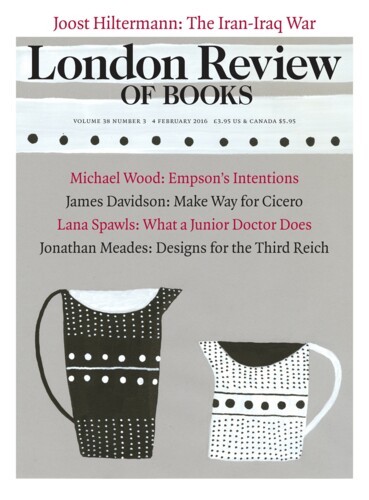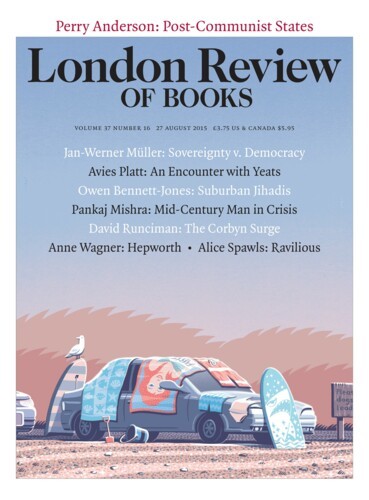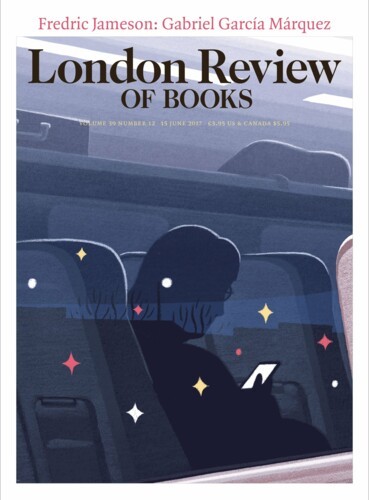On the high streets of small towns, the success stories are Primark, Greggs, Wilko, Poundland and variety shops like Tiger. Card and gift emporiums are ubiquitous. In this unpropitious climate, Waterstones is holding out with almost 300 shops, recovering – according to the figures – from near failure four years ago. The owner, Alexander Mamut, has invested over £50 million. James Daunt was brought in to give the shops more character and relax central control: booksellers can decide which books to promote and tailor their own displays. But it isn’t all about the books.
Alice Spawls
Alice Spawls is co-editor of the LRB.
Around Here: Drifting into the picture
Alice Spawls, 4 February 2016
When I walk up Bury Place on my way from Little Russell Street and the London Review office, I get the same view of the British Museum that Vilhelm Hammershøi recorded in 1906. Sometimes it’s hard to see what’s really there and not the painting. The row of buildings – now mostly hotels – that runs down Montague Street to the east of the museum is unchanged,...
In Penelope Fitzgerald’s The Bookshop, published in 1978 but set in the late 1950s (and based on her experience in a Southwold bookshop), Florence Green decides to open the only bookshop in Hardborough, a place with no fish and chips, no cinema, no laundrette, an ‘island between sea and river’. Ripping Yarns, the Highgate bookshop which will close on Sunday, is on a sort of island too, between Highgate Village and Muswell Hill.
At Dulwich Picture Gallery: Ravilious
Alice Spawls, 27 August 2015
Eric Ravilious’s watercolours are so cleverly executed and reproduce with such finish that you have to get up close to see how they are done. His later drawings (as he called them) do things that shouldn’t be possible – how could he know just how the brush would dry as he made the stroke, so that the fading colour gives a sense of distance, or how that never entirely smooth movement would produce a neat stippled effect to mimic the play of pale light on a field, a stony path, clouds?
Witches always come in threes, and gothic spinster sisters too, so an early photograph of three severe looking women must be the Brontë sisters – mustn't it? – especially if the scribble on the back could be read as their pen name, Bell. ‘Relikes been they, as wenen they echoon,’ says Chaucer’s Pardoner; everyone wants to believe in relics and to know what lady novelists looked like (Shakespeare too, but no one seems too fussed by what Smollett or Thackeray looked like, though we have pictures). The photo, bought on eBay for £15 by someone convinced it's of the Brontës, is a collodion positive, the slow process (it takes up to fifteen minutes to develop) which began to replace daguerreotypes in the 1850s, and was itself replaced by gelatin plates not long after. Anne and Emily were both dead by 1850, so to be a picture of the Brontës this would have to be a photograph of an earlier daguerreotype.
Read anywhere with the London Review of Books app, available now from the App Store for Apple devices, Google Play for Android devices and Amazon for your Kindle Fire.
Sign up to our newsletter
For highlights from the latest issue, our archive and the blog, as well as news, events and exclusive promotions.



